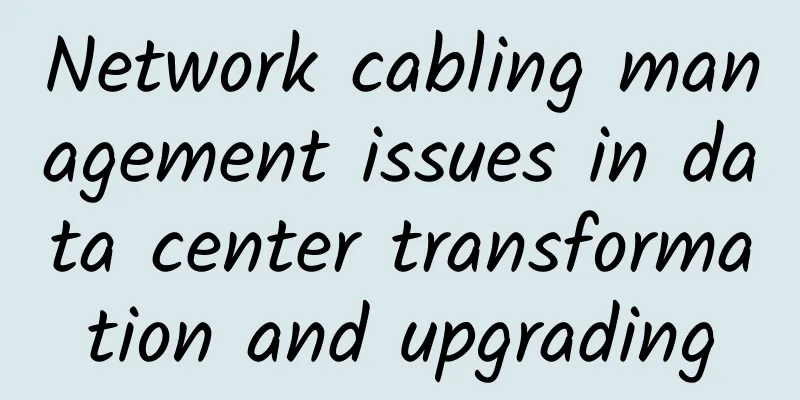Network cabling management issues in data center transformation and upgrading

|
Cabling is an important part of the internal network of the data center. Managers not only need to know where each cable goes, but also need to be able to find the specific cabling when equipment is reconfigured or changed. They must be able to obtain specific information about each cable in seconds, including the type and supplier of the cable, terminal connection points, cable duct location, and installation date.
The main purpose of doing this is to facilitate later maintenance and upgrade operations. Even so, when it comes to data center improvements, budgets and plans face challenges. So how to avoid network cabling damage during data center transformation and upgrades, even during normal operations? This question needs to be looked at from multiple perspectives. Before any kind of transformation or equipment upgrade, data center contractors must understand the cabling layout, which involves network, energy and other infrastructure cabling. Provide contractors with clear and accurate cabling documentation that clearly describes your data center situation and previews the existing cabling layout before starting. For basic network cabling management, ensure cables are kept off the ground to avoid being stepped on, away from chilled water pipes, and away from major electromagnetic sources such as chiller compressors, as well as away from heat sources to avoid fire hazards. Local building and electrical codes will provide additional guidelines for routing and connecting cables. If the planned renovation or upgrade will compromise cabling, for example, if the cable is going to be run through a wall, then a redesign will be necessary to prevent the cable from being damaged. This is usually a small project, but consider running the new cable in protected conduit to support faster Ethernet speeds and clearly labeling it for future reference. As technology continues to develop, network cable management has been further improved, in part due to data center renovation projects. For example, data centers can have decentralized cables and pipes under raised floors. During renovations, people can put network cables in protected conduits, place them on the ceiling, and then use vertical conduits to connect to individual racks. This can prevent cable damage caused by water leakage under the floor, and at the same time, it is easier to manage later. |
<<: Talking about new IP technology in data centers
>>: The significance of SDN deployment in developing countries
Recommend
Visit the exhibition area without leaving home and experience Huawei's 5G technology beyond your imagination
[51CTO.com original article] Not long ago, Huawei...
The price of 4G mobile chips will rise instead of fall in the second half of 2021
As mobile chip suppliers focus more on 5G solutio...
RackNerd: San Jose AMD Ryzen+DDR4+NVMe series KVM starts at $14.18 per year
Previously, we have shared information about the ...
Hostwinds: VPS monthly payment starts at $4.99, cloud server starts at $0.006931/hour, free IP change
Hostwinds is a long-established foreign merchant ...
How network segmentation strategies work with SD-WAN
Software-defined WANs (SD-WANs) have sparked a re...
Full coverage of prefecture-level cities! China has built the world's largest 5G network
[[373230]] In the year hit by the COVID-19 pandem...
F5 Launches Industry-Leading Training Program in Asia Pacific to Help Develop Next Generation of Technology Talent
F5 Networks (NASDAQ: FFIV) today announced the la...
SSL/TLS protocol for secure Internet of Vehicles communications
Preface As car travel becomes increasingly intell...
Linux TCP/IP protocol stack, data sending and receiving process, TCP protocol characteristics
It is no exaggeration to say that today's Int...
Expert: It is impossible for the United States to bypass 5G and develop 6G
On September 21, at the opening event of Sina 5G ...
The Ministry of Industry and Information Technology has launched a special campaign on IPv6. What should IDC, CDN and cloud service providers do?
On November 25 last year, the European RIPE NCC m...
HostYun Los Angeles CU2 (AS9929) VPS simple test
I looked through the previous articles and found ...
Teach you to understand the communication protocol in three minutes
Once you enter the communications industry, you w...
CDN+MEC will become the main battlefield in the future
With the rapid development of cloud computing, cl...
Choosing the right communication mode for your IoT project
Before you embark on a new IoT project, you shoul...









